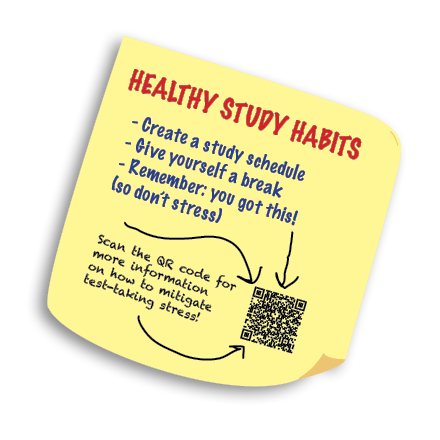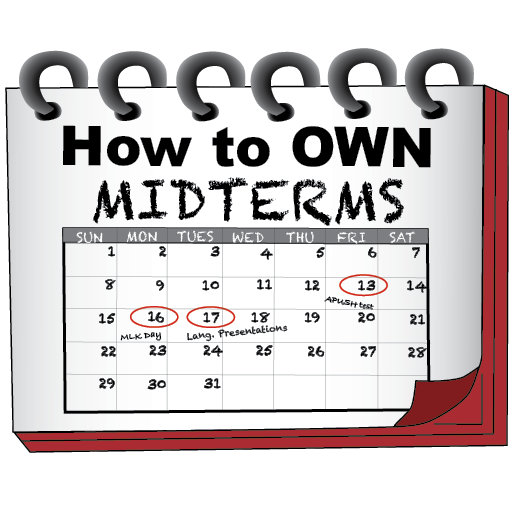Melissa Rizzo & Teddy Smedley, Centerfold Editors
@mrizzo_courant @tsmedleycourant
January is a month often dreaded by students; spending hours studying for midterms and staying up until the darkness of the nighttime sky becomes so deep, so profound, it blindfolds the earth. Countless cups of coffee often fuel their stress and anxiety, allowing them to scrape by with enough motivation for many all-nighters. By the end of the week, eyelids struggle to remain open, holding up what feels like the weight of the world, and minds are filled with calculus formulas that echo over and over again, like an unanswered call in an empty cave. There must be a better way: a way that students can avoid such overbearing amounts of stress and exhaustion. Online resources list countless study tips and guides to success, but how can students know what will work best for them?
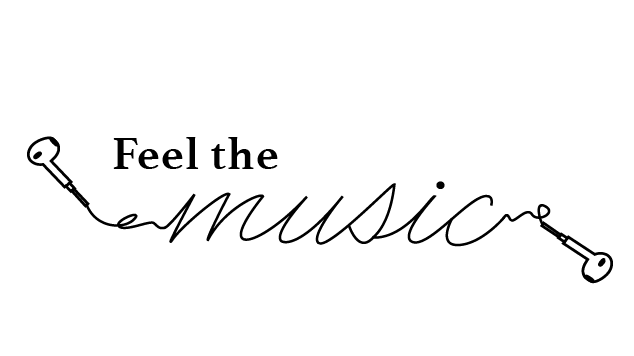
According to The Learning Center at the University of North Carolina, when studying, “silence isn’t always golden.” In fact, many students turn to music to remain focused. “When I study, I like to listen to some nice white noise kind of music. Sometimes, if I’m into a specific artist, like Taylor Swift, I’ll listen to that too,” freshman Maggie Dooney says.
Since complete silence is almost impossible to attain, Maggie likes to play mellow music to block out any other background noises. “I can focus on what I’m doing and disregard any distractions around me. It puts me in my own bubble,” she said.
Similarly, sophomore Sam Mettler finds that he studies best when he’s listening to his favorite music. “If I’m trying to study in silence then my brain feels like a ping-pong ball, bouncing from one thought to another. My mind is very loud and I need music to cancel it out.” Sam also likes to listen to different kinds of music depending on what he is studying. “Instrumental music is very helpful for me if I need to focus on the words that I’m reading,” Sam said.
Junior Eva Campbell has similar inclinations, preferring to listen to music only when studying for STEM classes. She said “I find that I need silence when I’m taking notes for History or completing an English assignment. However, when I’m studying Math or Physics, music helps me stay focused and motivated.”
Each student, however, has different song preferences. Maggie, for example, likes to listen to calming music found in a Spotify sleep time play list, while Sam prefers to listen to instrumental music, especially songs played by violinist Joel Sunny. In contrast, Eva studies best while listening to mainstream pop music. However, when twenty-six students were asked if they prefer to listen to music while studying, six students indicated that they find music distracting.
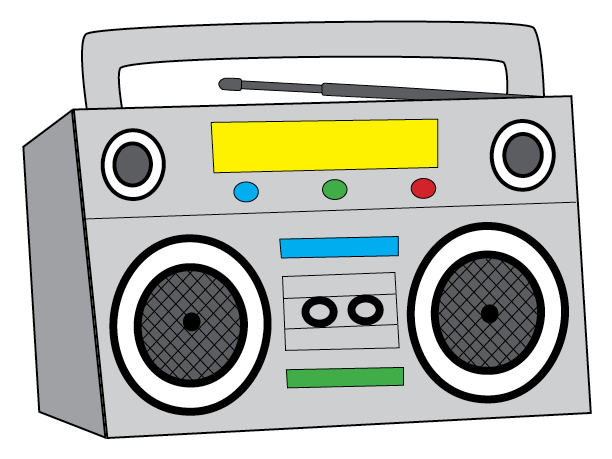
So the question remains: what causes these differences in study preferences, and how can a student know whether music helps or hinders their learning? According to Social Studies and AP Psychology teacher, Dr. Jonathan Schwartz, studies in psychology suggest that the real question is not ‘music vs. no music’ but rather what should you listen to, and how closely should you listen? “If you are doing a task you don’t enjoy and use music to make it more enjoyable, you are probably not giving the task the attention it deserves, so turn it off,” he said. “However, evidence also suggests that playing background music while you work will likely put you in a better mood, and keep you on task longer.”
With this in mind, music does affect concentration. “A good rule of thumb is: music is fine while you work if you can be sure that after an hour of concentration, you have no idea exactly which songs you heard or what order they played in,” Dr. Schwartz said. However, if students are aware of each song that is playing, or are curating a play list while working, that will likely interfere with their efficiency.
Create Your Environment
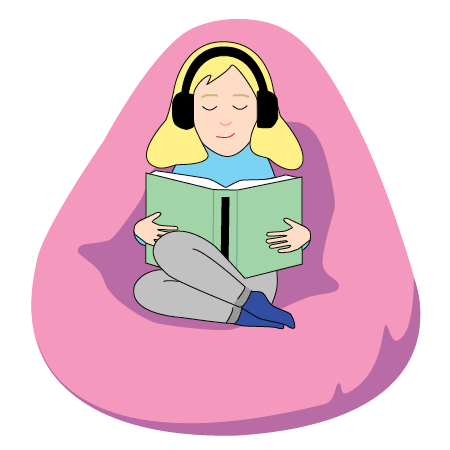
While music can be a key component of effective studying, environment is also a factor. The Universities wand Colleges Admissions Service identified that a study space plays a vital role in how effectively a student can learn and absorb new information.
The brain has certain environmental and psychological requirements that must be met for students to absorb study material. “We are more productive when we feel safe, satisfied, competent, and well-rested. To draw a rather obvious and silly example, you will do better on demanding mental tasks, such as studying, when in a quiet and safe environment than when in a foxhole during a battle,” said Dr. Schwartz. Whether it be in a bedroom or at the library, the most important thing is that students have surfaces and spaces that they can control in terms of distractions and interruptions.
Fulfilling the second psychological requirement: satisfaction, varies quite drastically from person to person. While most equate a satisfying environment with organization, what’s most important is to have a space that works for the student. “An ‘organized’ workspace is a trickier concept than it would at first seem,” Dr. Schwartz said. “I, for example, like clean surfaces and focus better when there are no unruly piles of paper lying about. However, my wife, who is a CEO, works best when she can visually lay out all the ‘tasks’ in front of her.”
Overall, the secret to creating a productive study environment lies in students observing how their own brain works best and creating a space that is conducive to that. “Finding your best ‘work environment’ is both very subjective and very much a process of trial and error. You have to be willing, to be honest with yourself and admit the best work environment is possibly not the most enjoyable one; a little controlled stress is necessary for mastery of complex behaviors and learning. Overly relaxed work areas, such as a bed, are as bad for mastery as are overly stressed ones,” Dr. Schwartz said.
School Psychologist Sandra Warkentin also discussed individuality and study environments. “It’s all personal and about what works for you. Do you need a quiet room, do you need a warm room, do you need a cold room? Experimenting with different environments and finding what works best will not only help you in high school, but also when you go off to college,” she said.
Know Your Limits

As midterms loom, many students experience heightened stress levels. Whether that be due to a vigorous homework schedule or pressure, this stress can affect an individual’s ability to study. “Kids place too much weight on midterms. This greatly impacts your ability to study effectively, as stress and anxiety prevent your brain from focusing,” Ms. Warkentin said.
One way to ease stress is to simply use ‘mind over matter.’ “The reality with the midterm is that it’s weighted at 10% of your semester grade. If you run the numbers you’ll see that it doesn’t move your grade very much,” Ms. Warkentin said.
The happiest students are
Dr. Jonathan
the ones that are motivated
by some level of joy in the
learning process
Schwartz, Social
Studies and
AP Psychology
teacher
Another way for students to decrease stress and anxiety is to create a schedule. “Say to yourself, ‘I’m going to study for one hour a day in the morning and then relax for the rest of the day. Whatever it may be, just set up a schedule so that you can feel good about putting daily study time in while valuing breaks, preventing burn-out” Ms. Warkentin said.
Finally, keeping low-stress levels during the midterm season is highly dependent on a student’s attitude.
“An interest in the topics being covered, an enjoyment of the teaching style, and a desire to become a leader during class sessions are key motivators for students,” Dr. Schwartz
said.
